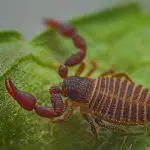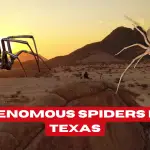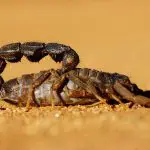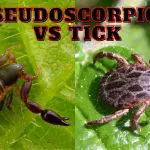In today’s article we’ll learn about the endangered Tooth Cave Pseudoscorpion (Tartarocreagris texana), and some of its cohabitant species…
The Tooth Cave Pseudoscorpion is a tiny arachnid of the family Neobisiidae and only lives in caves. The species was initially a member of the genus Microcreagris before scientists assigned it to the genus Tartarocreagris where it belongs up to date. These arachnids are only found in a few caves in Travis County, Texas. Currently, the tooth cave pseudoscorpion is an endangered species.
In this article we’ll a look at this little-known pseudoscorpion species. We’ll also learn more about the weird species it shares its habitat with, like the Tooth Cave Spider, the Bone Cave Harvestman and the Tooth Cave Ground Beetle.
A unique, but very much endangered species
The Tooth Cave Pseudoscorpion is a Troglodytic species, meaning that it is entirely adapted to living in caves. Everything about it has adapted to this environment.
Like many cave-dwelling invertebrates, it has a lighter coloration. There’s no point having camouflage if predators can’t see you in a pitch black environment, after all. It’s also blind, relying on its long pedipalps and hairs to feel its way around.
Lacking eyes and pigment is great for saving energy in a cave environment. In fact, eyes and melanin both cost energy to maintain and produce, respectively. By not having them, the tiny arachnids get an energetically and evolution advantage over other species that might try to colonise their underground habitat.
Tooth Cave Pseudoscorpion reproduction
Little is known about the life history or reproduction of this species. We do know a key few facts, though:
- they live over a year
- offspring resemble adults, there is no larval stage
- individuals are full-grown at a body length of just over 4mm for females, and just under 4mm for males
- they carry their eggs until they hatch
- the species breeds year-round, there is no season underground
The last point here is particularly interesting. As they aren’t exposed to the above-ground seasons, Tooth Cave Pseudoscorpions can reproduce whenevere they want, and this may lead to more generations per year. This obviously depends on how abundant food is in the caves. Food is sometimes scarce in caves, but Pseudoscorpions are great predators…
I would hypothesize that if they could find enough food to reproduce several times a year, this would allow genetic mutations to crop up more often, and perhaps accelerate how fast the species evolves.
What Eats the Tooth Cave Pseudoscorpion?
While Tooth Cave Pseudoscorpion has many threats, the Red Imported Fire Ant tops the list. These ants not only compete for the same food but also prey on the Tooth Cave Pseudoscorpions, threatening their survival in the caves.
Researchers recorded the presence of Red Imported Fire Ant in over 140 caves in Travis County where the Tooth Cave Pseudoscorpions live.
Since the 1970s, these ants have threatened the Tooth Cave Pseudoscorpion. Moreover, the Tawny Crazy Ant species is another potential threat to the Tooth Cave Pseudoscorpion population. Like the red imported fire ants, these ants prey and feed on the Tooth Cave Pseudoscorpions in the caves.
How Does the Tooth Cave Spider Adapt?
One of the few underground predators that the Tooth Cave Pseudoscorpion has to compete with is the The Tooth Cave spider (Tayshaneta myopica). This fascinating spider also lives completely underground and shares similar adaptations with the Pseudoscorpion.
These include:
- small, possibly blind eyes
- pale coloration
- long, thin limbs
- a slow metabolism
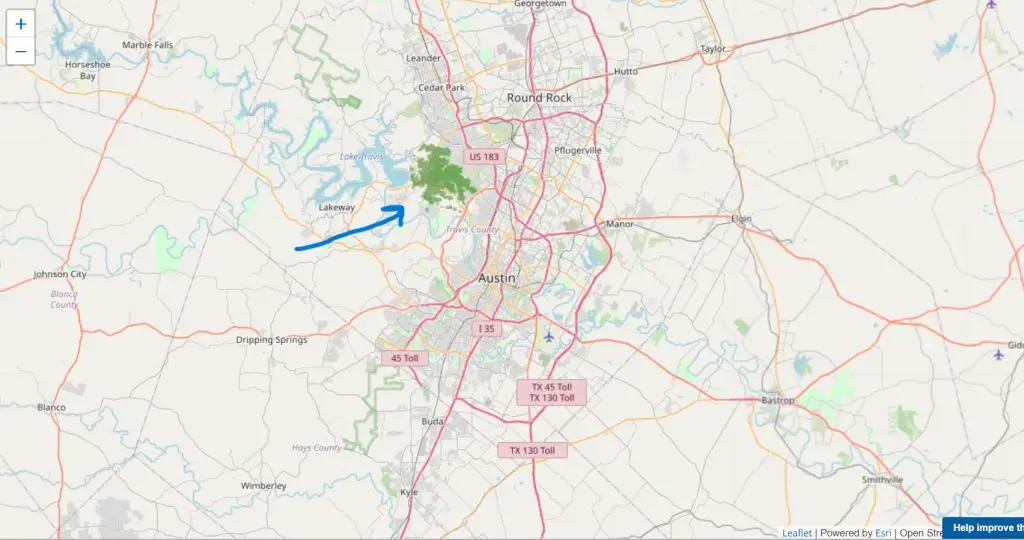
Bone Cave Harvestman
How big is the Bone Cave Harvestman?
The Bone Cave Harvestman is a tiny underground-living arachnid common of up to 11 inches of body length found in many caves in Central Texas. It is characterized by long legs and has no eyes since it spends most of its life in dark caves. A mature Bone Cave Harvestman’s legs can grow between 0.24 and 0.46 inches.
In addition, it has a bent apical spine of about 0.002 inches in length. It also has a claw-shaped peristylar and a long middle lobe. Like the Tooth Cave Pseudoscorpion, it has a limited range in Travis County but also occurs in Williamson County.
What Does the Bone Cave Harvestman Eat?
The Bone Cave Harvestman mainly feeds on invertebrates and other nutrients in its ecosystem. Nutrients dissolve in water from the surface before it flows into the underground caves: crevices, cracks, and other openings in the subsurface. The food comes from nutritional sources such as eggs, feces, and plant materials.
Furthermore, cave crickets introduce more food for the Bone Cave Harvestman through nymphs, feces, eggs, and other dead body parts that the feeder would appreciate. The blindness of the Bone Cave Harvestman prevents it from actively hunting for live prey.
Is the Harvestman Endangered?
The Harvestman or Texella reyesi is among the protected endangered species in the United States of America. It is endemic to Texas, where it lives in caves. It is common in the limestone caves in Williamson and Travis Counties. The species was initially a member of the Texella Riddell until 1992 when scientists declared it Harvestman species.
Human activities are the most significant threat to the existence of the Harvestman. Urban development activities lead to the destruction of caves and karst features, which are the natural habitats of these creatures.
Can Harvestman Bite Humans?
Harvestman can sometimes bite since they are omnivores and both scavengers and predators. They use their chelicerae, fang-like mouths, to grasp, hold, and chew their food. However, they cannot bite humans due to their small size and weakness.
Do Harvestman have Poison?
Harvestmen do not have Poison and, therefore not dangerous to humans. Their pincer-like claws are only helpful when tearing apart food. They do not have venom glands or stingers. Only their long legs can make you mistake them for true spiders, which are venomous and poisonous.
Tooth Cave Ground Beetle
How Big can Ground Beetles Get?
A mature ground beetle can grow up to about 1/8 to ½ inches in length, with a few species growing up to one inch. The Tooth Cave Ground Beetle usually reaches about 1/3 of an inch, and has a fairly light build compared to above-ground species.
They are flat-bodied insects with visible mandibles or jaws. Below are some features to help you recognize a ground beetle at a glance:
- It has long, thin legs
- It displays different colors at different angles of light; sometimes black and other times brown
- Some species have bright colors, such as blue, red, or green
- Its head is narrower compared to the neck and contains thread-like antennae of moderate length
Are Ground Beetles Venomous?
Ground beetles are not venomous and do not pose any harm to humans. You can only find a few of these insects inside buildings at a time, though sometimes you can have a significant infestation, especially during spring. Still, they are not a threat since they cannot damage your food, clothes, or other properties.
Although they do not bite, mishandling a ground beetle can provoke it to pinch your skin in defense. However, unlike other insects, ground beetles may not cause a nuisance in your home since they are only short-lived indoors. In addition, they cannot reproduce inside buildings.
The Tooth Cave Ground Beetle is harmless, and only found in a few limestone caves in Texas. It is not a threat to you, even if you do spelunking as a hobby.
Are Ground Beetles Aggressive?
A ground beetle is not aggressive but can inflict pain by pinching your skin if it feels threatened. Furthermore, these insects love to stay away from people as they hide in dark places underground. These beetles do not invade houses, meaning you can only find one or two near crevices, cracks, and other dark corners.
If you find a ground beetle in your yard, it won’t be a Tooth Cave Ground Beetle – this species is strictly cave-dwelling and never seen above ground.
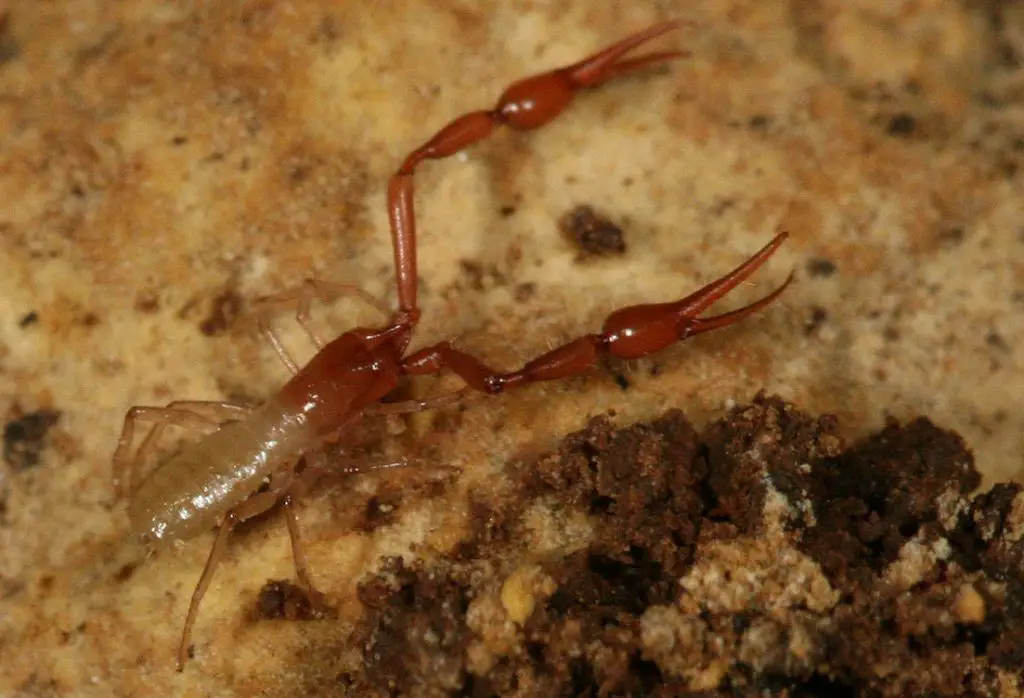
FAQ relating to Tooth Cave Pseudoscorpions (Tartarocreagris texana)
Why is Tooth Cave Pseudoscorpion Endangered?
Human activities like land clearance and construction are among the greatest threats to the existence of the tooth cave Pseudoscorpions. Such activities destroy the insect’s natural habitats. The main threat to its existance, however, is the fact that its distribution is so limited. If it loses just one cave to inhabit, that is a major blow to the whole population.
Where are Tooth Cave Pseudoscorpions Found?
Tooth cave Pseudoscorpions live in dry and tiny limestone caves with some underground water infiltration. Tooth cave Pseudoscorpions are only found in a few caves in Texas. Contrary to popular belief, they are not known to be found in the Balcones Canyons National Wildlife Preserve. They are actually found much closer to Austin, in an area called the Jollyville Plateau.
Here are some key takeaways about these arachnids:
- Tooth cave Pseudoscorpions spend all of their lives underground
- It is an endangered species, mainly due to human activities
- These insects can neither bite nor harm humans or pets
- It is prey to Fire Ants and other similar insects

